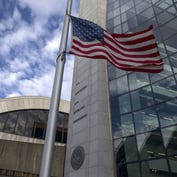WASHINGTON (HedgeWorld.com)–The Managed Funds Association has commented on the U.S. Securities and Exchange Commission’s reproposal of rules for the National Market System.
Last spring, the SEC proposed a set of rules that elicited a great deal of comment. In reaction to some of the comment, the SEC revised the earlier proposal so extensively that it decided in December that instead of implementing NMS rules it would repropose them for another round of comment.
The securities and asset-management industries have been especially interested in one aspect of NMS reform–the idea of an extended trade-through rule, one which would establish for all NMS stocks a principle of price priority of limit orders. There already is an intermarket trade-throughs, or ITS rule, in place, but it is limited in scope: It exempts block trades, for example, and doesn’t cover Nasdaq.
The new proposed rule would cover Nasdaq, all exchanges, all electronic communications networks and alternative trading systems, so that a limit order in any one of these will serve as a limit order in all, without exemption for block trades.
John G. Gaine, president of the MFA, wrote in the association’s submission that any trade-through rule “imposes unwarranted burdens on the investing public that manages its money through use of institutional investors by privileging displayed price over other factors that are frequently important to best execution and limiting the flexibility of investors with large orders to adopt trading strategies that manage the risks associated with such orders.”








 February 01, 2005 at 07:00 PM
February 01, 2005 at 07:00 PM










